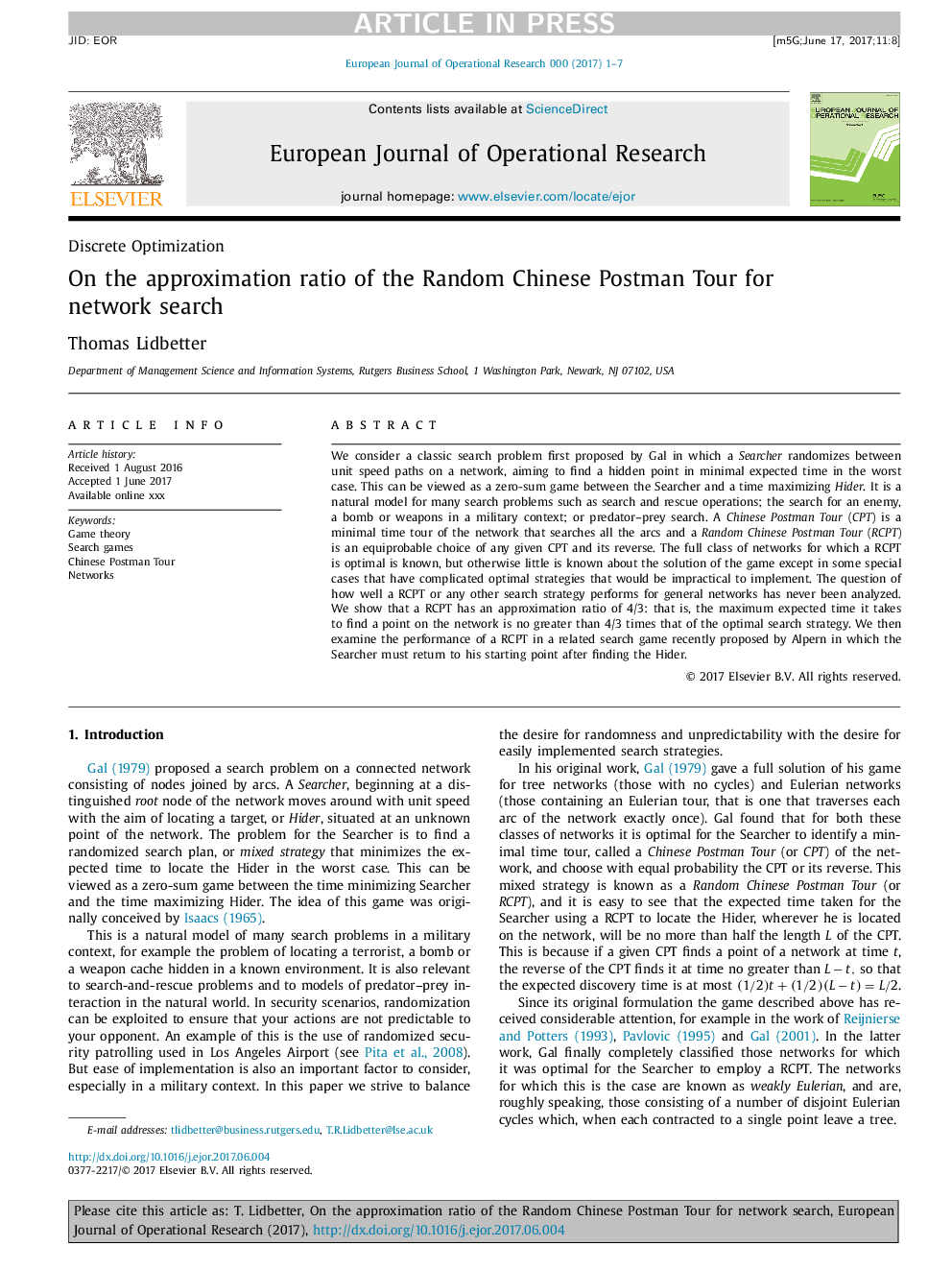| Article ID | Journal | Published Year | Pages | File Type |
|---|---|---|---|---|
| 4959339 | European Journal of Operational Research | 2017 | 7 Pages |
Abstract
We consider a classic search problem first proposed by Gal in which a Searcher randomizes between unit speed paths on a network, aiming to find a hidden point in minimal expected time in the worst case. This can be viewed as a zero-sum game between the Searcher and a time maximizing Hider. It is a natural model for many search problems such as search and rescue operations; the search for an enemy, a bomb or weapons in a military context; or predator-prey search. A Chinese Postman Tour (CPT) is a minimal time tour of the network that searches all the arcs and a Random Chinese Postman Tour (RCPT) is an equiprobable choice of any given CPT and its reverse. The full class of networks for which a RCPT is optimal is known, but otherwise little is known about the solution of the game except in some special cases that have complicated optimal strategies that would be impractical to implement. The question of how well a RCPT or any other search strategy performs for general networks has never been analyzed. We show that a RCPT has an approximation ratio of 4/3: that is, the maximum expected time it takes to find a point on the network is no greater than 4/3 times that of the optimal search strategy. We then examine the performance of a RCPT in a related search game recently proposed by Alpern in which the Searcher must return to his starting point after finding the Hider.
Keywords
Related Topics
Physical Sciences and Engineering
Computer Science
Computer Science (General)
Authors
Thomas Lidbetter,
